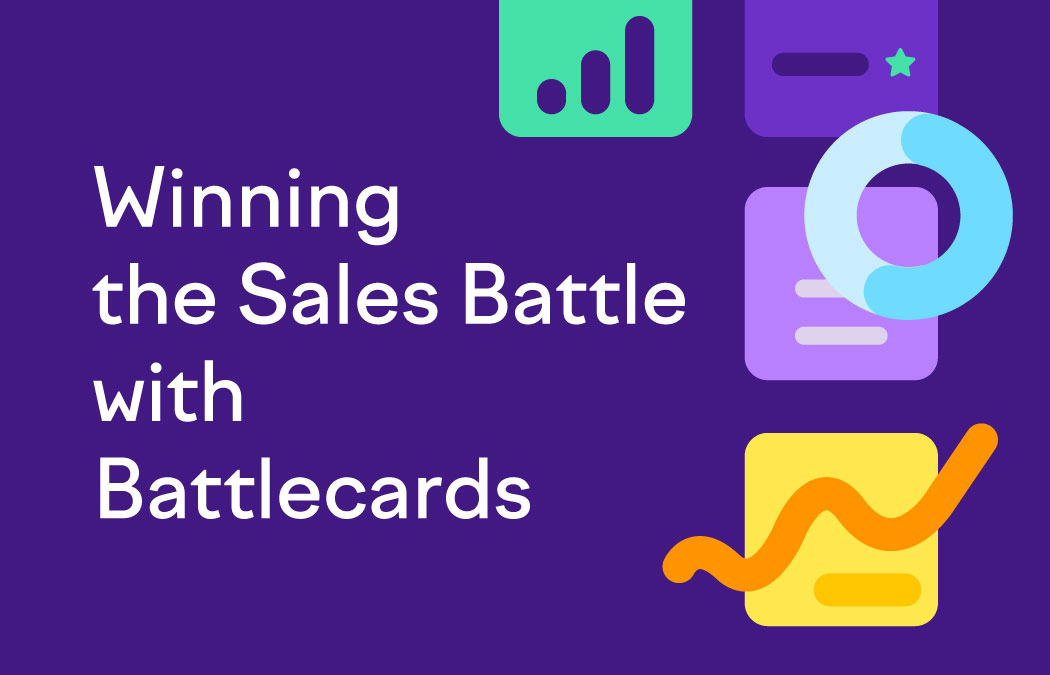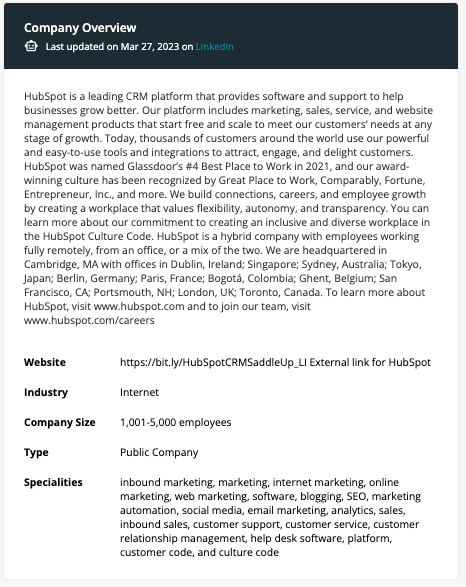Battlecard series (Part 1): How to create Battlecards that work
Not all Battlecards are created equally and can hinder more than help. Read more about how to build Battlecards that win.
What is a sales Battlecard, how do salespeople use them, and what should they include? Read on for everything you need to know about an effective Sales Battlecard program.

Tired of losing deals to the competition? Finding it impossible to get your sales team on the same page when it comes to messaging and positioning? Creating and using sales Battlecards is the solution you’ve been looking for.
As Kompyte users adopt Battlecards, we’ve noticed that using this central source of truth impacts competitive win rates considerably - with average increases of up to 30%!
Today we’ll talk about why you might create a sales Battlecard program and what should be included on these sales playbooks to set your team up for success.
If you're ready to skip to a step-by-step guide to creating Battlecards, including where to get the information you’ll add to them (including the use of ChatGPT), and see how Kompyte can support you in maintaining an effective Battlecard program that has a measurable impact on sales check out this detailed post.
A sales Battlecard is like a playbook or a “second brain” for salespeople.
A Battlecard is not a script. Rather, it consists of a series of sections with quick talking points written in conversational tone, that sales representatives can access on the fly.
A sales Battlecard should be:
An effective Battlecard is the culmination of your efforts to gather competitive intelligence, capture the institutional knowledge of your sales team, and the hard work you’ve done creating messaging and positioning.
Battlecards equip your sales team with everything they need to consistently engage in productive conversations with potential customers.
Battlecards that are concise and well organized cut down on time spent preparing for calls and onboarding new sales reps. A quick glance before a call is all that is needed to put any sales rep in mind of the important details. New sales reps will appreciate this “Cliff’s Notes” approach which means not having to memorize everything there is to know about many competitors.
Sales reps refer to them during calls for a quick answer to a question or response to an objection. They can also use Battlecards to keep official messaging in front of them at all times.
Let’s take a look at an example: Eduardo’s company sells a software product that provides a unique set of features and benefits to customers in a particular market. His sales team has been struggling to close deals with potential customers because they're having trouble articulating the value of the product and differentiating it from a competitor’s offerings.
By creating a sales Battlecard that outlines the product’s key features and benefits, competitive differentiators, strengths and weaknesses, objection handling, and pricing, Eduardo’s sales team can now:
As a result, they're able to close more deals and win the sales battle in that market segment.
A Battlecard needs to be efficient, readable, and conversational.
Here is what to include in each competitive Battlecard:
This section serves as a “cheat” sheet for learning company basics and is especially useful if you have new reps, a large number of competitors, or a new competitor in your space.

A summary of your competitor’s offerings and how they’ve positioned themselves.
A more detailed look at your product’s features compared to the competition. List each feature and whether each company includes them. Provide more details where needed (ie., “yes, but only on the Pro plan”)
Pricing and packaging details. Include product tiers (and what is included in each) as well as details on monthly or annual pricing.
How does your competitor position themselves? How do they position you? Example: “Competitor X positions themselves as the timecard software that understands shift workers.” And “Competitor X positions us as a solution for very small business” - we can counter this by saying that ⅔ of our customers have 1K+ employees.
Knowing why you win/why the competition loses to you is key to positioning your company as the best choice.
Knowing why you lose/why the competition wins can help you avoid introducing topics that might highlight their strengths.
Over time, you’ll notice you get the same objections over and over again. This may be because of the way your competition is talking about you in demo calls, or simply as a results of their messaging in marketing. Knowing how to overcome them and continue the conversation is vital to closing these deals.
While you might not refer to these while ON a call, knowing what customers are saying about your competitors is key to understanding their strengths, weaknesses, and differentiators. Knowing what is important to their users can help you improve your own messaging.
Keeping track of how you do when up against an individual competitor is key to spotting trends and monitoring the success of your current messaging. Kompyte shows win rate overall but also shows you the impact of using Battlecards on win rate.
These are questions that steer the conversation to allow you to highlight your strengths and their weaknesses. They also help you get to know what is important to your prospect.
Share details of deals recently won vs. this competitor. Highlight what you think made the deal possible, including any pivotal messaging that seemed to resonate.
Share details of deals recently lost vs. this competitor. Why do you think the deal was lost? What could you have done differently, if anything. This is about criticizing your methods, rather, it’s a good chance to reflect and share your learnings.
The best Battlecards are the ones that are up to date and that sales people will use.
You can store Battlecards in a centralized location, such as Google Drive or Dropbox and attempt to make sure people always access the most-recently updated information. But, version control issues invariably pop up.
That’s why having your Battlecards in one central location that is easy to access (even inside the tools your team already uses) is crucial for adoption. Naturally we recommend Kompyte for that! Kompyte makes it possible to pull up Battlecards in your favorite CRM or with our browser extension.
Kompyte also allows you to see who is actually using Battlecards and which are being viewed the most. If you notice one isn’t being used, find out why and do what you need to to make it more useful.
How often does your competition update features, products, and messaging? That’s how often your Battlecards need to be updated. This can vary by industry - with SAAS companies often adding features and testing messaging weekly or monthly, while large manufacturers may move at a slower pace.
Manually updating competitive intelligence is a full-time job, at least. If competitive intelligence and sales enablement are priorities for your organization, you’ll want to look into automation.
By providing your sales team with concise and relevant information about your products and services and that of your competitors, Battlecards enable more effective conversations with prospects and customers, leading to increased revenue.
When you implement Battlecards, your sales team is equipped to handle objections, answer tough questions, and highlight the unique value proposition of your offerings. And by regularly updating your Battlecards and making them easily accessible to your team, you can ensure that they always have the most up-to-date information at their fingertips.
So if you're looking to gain an edge in the competitive world of sales, consider investing in Battlecards. By arming your sales team with the knowledge and tools they need to succeed, you'll be setting them up for success and putting your organization on the path to growth and profitability.
Not all Battlecards are created equally and can hinder more than help. Read more about how to build Battlecards that win.
Battlecards are playbooks that help sales teams close more deals. But, how do you get sales reps to use them?
Sales Battlecards get your sales team ducks in a row so you can start outselling your competition. How do you create one that helps close more deals?...
Be the first to know about new B2B SaaS Marketing insights to build or refine your marketing function with the tools and knowledge of today’s industry.